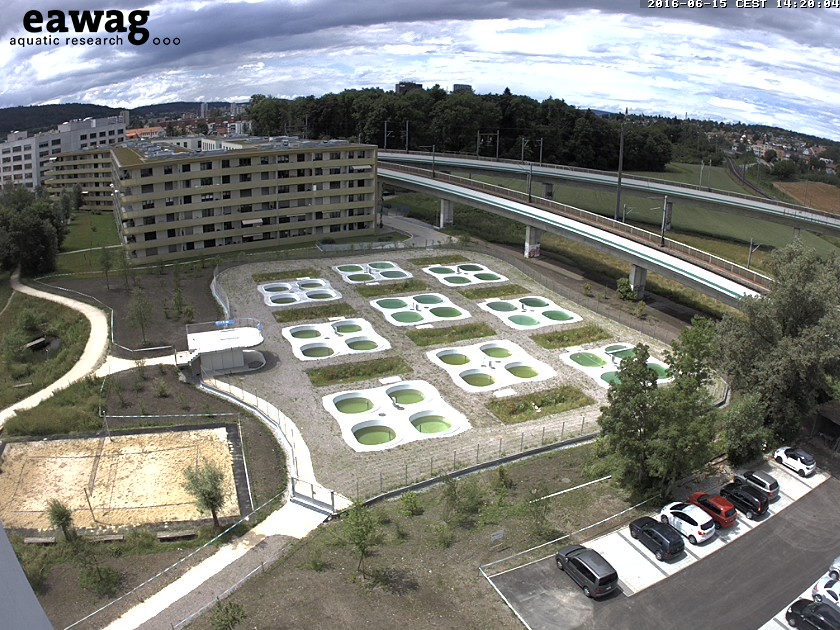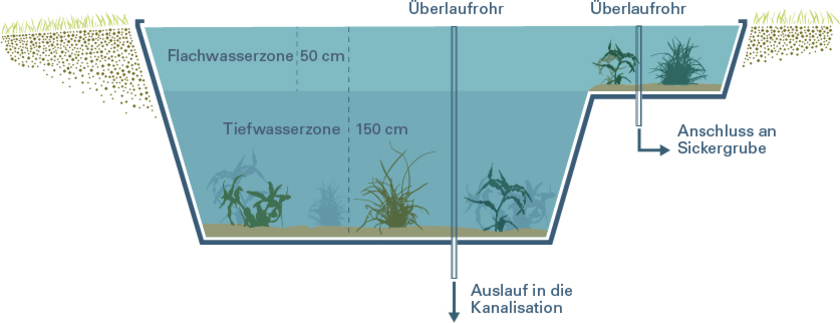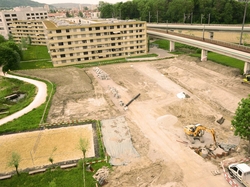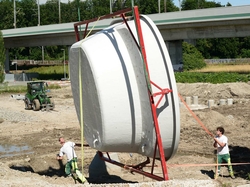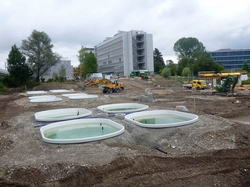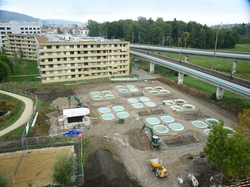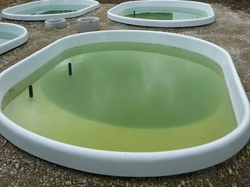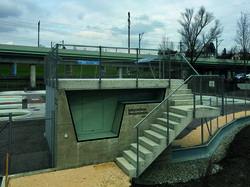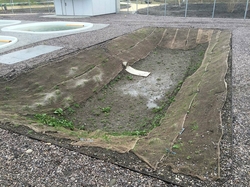Experimental ponds
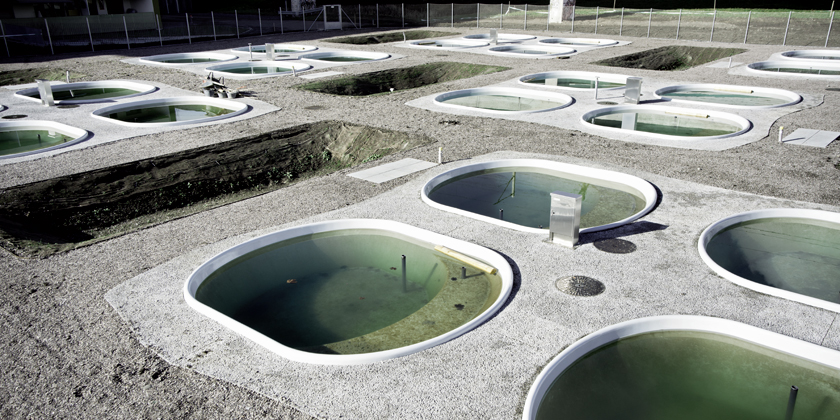
Experiments under natural conditions
Findings from pure research in the laboratory are not always 100% transferable to naturally occurring water bodies. Eawag has therefore constructed a number of experimental ponds in an area close to the “Aquatikum” experimental hall in Dübendorf. The ponds contain mini-ecosystems which are exposed to natural weather conditions. The researchers are able to influence and control these systems for experimental purposes, which enables them to find answers to questions on biodiversity and on how ecosystems function – questions which could not be answered by studying what happens in a test tube.
The experimental ponds
The shells of the ponds, made of glass reinforced plastic, are filled with drinking water taken from the Eawag site. The ponds are divided into two types – shallow and deep water – and are sunk 0.5 and 1.5 metres into the ground respectively. Once an experiment is completed, the water is released into the drainage system and conveyed to the water treatment plant. Any overflow from the ponds is channelled into special soakaways.
The effects of reduced biodiversity on ecosystems
Biodiversity has diminished significantly over the past few decades, not least because of humans’ use of, and often damage to, natural resources. Plant and animal species that have disappeared can no longer fulfil their function within the ecosystem. One of the topics which Eawag is researching in the experimental ponds is the effect which a reduction in biodiversity has on the functioning of ecosystems. This knowledge will enable us to better estimate the potential losses and damage resulting from reduced biodiversity, and to devise measures to revitalise and protect water bodies.
FAQ
Are the experiments dangerous?
The animals and plants in the ponds also occur naturally here in Switzerland. The experiments pose no risk for the environment.
Which organisms are found in the ponds?
These are species also found in the drainage area of the Glatt. Among them, for example, are algae, plankton and fish.
Where does the water for the ponds come from?
The water is fed in by drinking-water pipes on the Eawag grounds.
If an experimental pond is emptied, where does the water go?
The run-off (rainwater) flows into the adjacent sump. If a pond is emptied completely, the water flows into the community water-treatment plant.
Why is there a fence around the ponds?
There is a fence around the entire area so that no human, object or animal can get into the ponds from the outside. A possible falsification of the experimental results is thus prevented.
Why 36 ponds?
Multiple experiments are carried out concurrently, in order to be able to draw statistically-relevant conclusions.
What is being researched in the ponds?
Researchers are investigating what effect a diminished biodiversity has on the functions of ecosystems. The goal of these experiments is to use the results to generate measures for protection of the environment.
Gallery
Webcam
